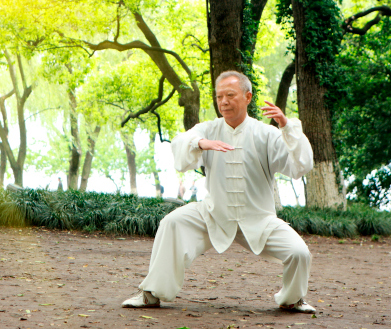 The definition of distill is – To extract the essential meaning or most important aspects of.
The definition of distill is – To extract the essential meaning or most important aspects of.
When I began my Tai Chi practice about 8 years ago I was thinking about how fascinated I was when I first saw it. I remembered thinking this looks like a lot I have to memorize and I wondered whether I was breathing properly and what direction should I be facing now?
My teacher Mark Lord (a student of Yang style practitioner Mr. Liu Hsi-Heng) started his class and I stood attentive determined to “learn” how to do this Tai Chi thing.
He was an amazing man to say the least. With a calming presence he had always started the class by reminding us that there were 5 principals that should be thought about throughout our daily practice. To this day they have served as a constant reminder of what is truly important in “learning” Tai Chi.
He was able to distill generations of wisdom into these simple principles that he felt were so very important to understanding the practice of Tai Chi.
The first was Relax. No tension. He used to say “Relax don’t collapse.” There is a difference in staying relaxed but still being aware of your body and collapsing and having no structure to speak of.
Second was to “Suspend the head top.” Mark often described it like a plumb line. I always imagined my body was like a marionette puppet. Suspended but hanging free. My head always in line with my spine, straight and centered.
Third was “Turn don’t twist.” This is probably one of the more challenging principals. I always imagine my body from the waist up to be between two panes of glass. So any direction I have to move, my upper body can’t “twist” but has to move within the glass frame. It is meant to keep the spine in alignment so the flow of “chi” can be maintained and there’s no tension in the body form twisting.
Fourth was “Separate the weight (clearly).” Often postures in the practice of Tai Chi require us to move and distribute weight in our legs. Sometimes evenly and sometimes one leg can carry all of our weight. Mark used to say one leg was heavy like a mountain and the other was as light as a feather. That distinction seemed “clear” enough to me.
 The Fifth principal was the “Beautiful lady hand.” This was defined as a straight wrist.(Not bent or closed off to the flow of chi.) Not tense but straight, ready to receive, sensitive and full of flowing energy. Certain moves in the form break from this principle, but it is a steady reminder that we must allow for our body to stay in alignment with natural energy flow and not “close off” our chi.
The Fifth principal was the “Beautiful lady hand.” This was defined as a straight wrist.(Not bent or closed off to the flow of chi.) Not tense but straight, ready to receive, sensitive and full of flowing energy. Certain moves in the form break from this principle, but it is a steady reminder that we must allow for our body to stay in alignment with natural energy flow and not “close off” our chi.
I continue to use these guiding principals to maintain good habits and I’m reminded Tai Chi should be practiced with a sense of simplicity and strong “rooted” fundamentals. Enjoy your practice and I hope these basic principles help you in whatever form of Tai Chi you practice.
Above all, your movement should feel natural and always be mindful of your breathing. If you feel like your swimming in air chances are your doing something right.

Leave a Reply